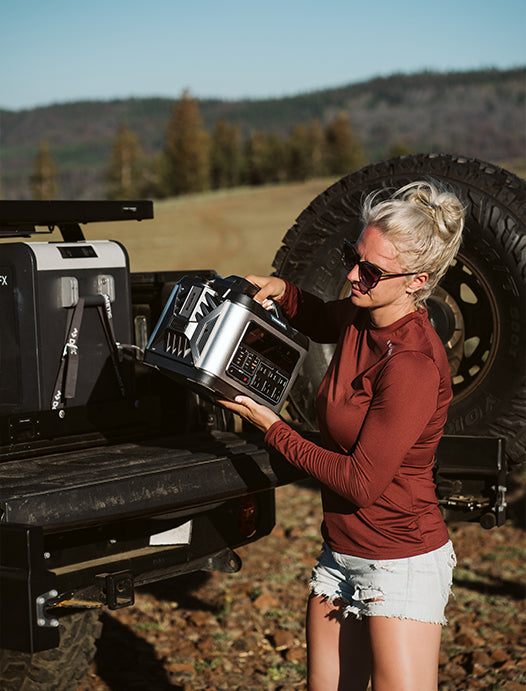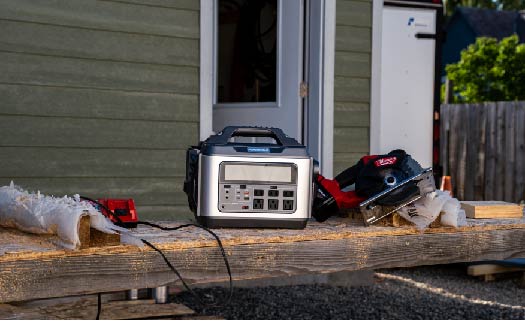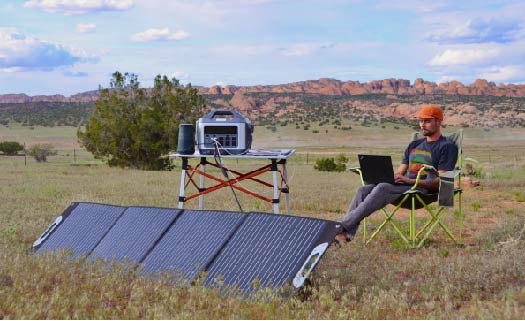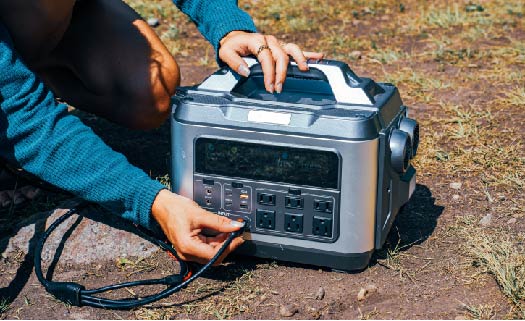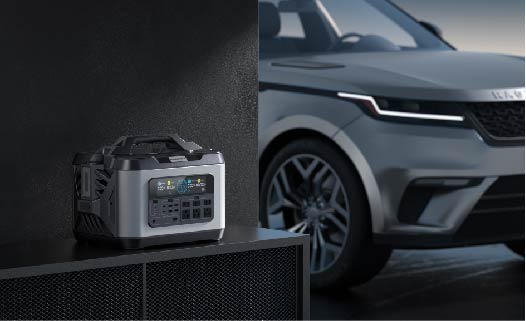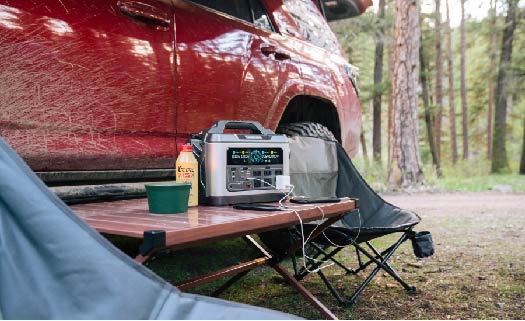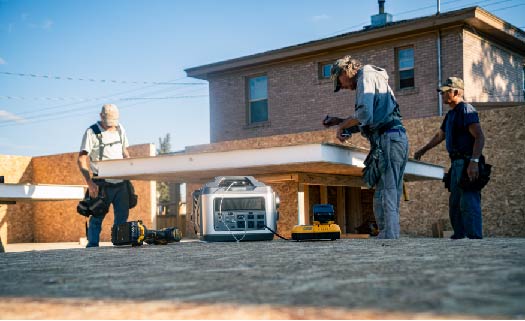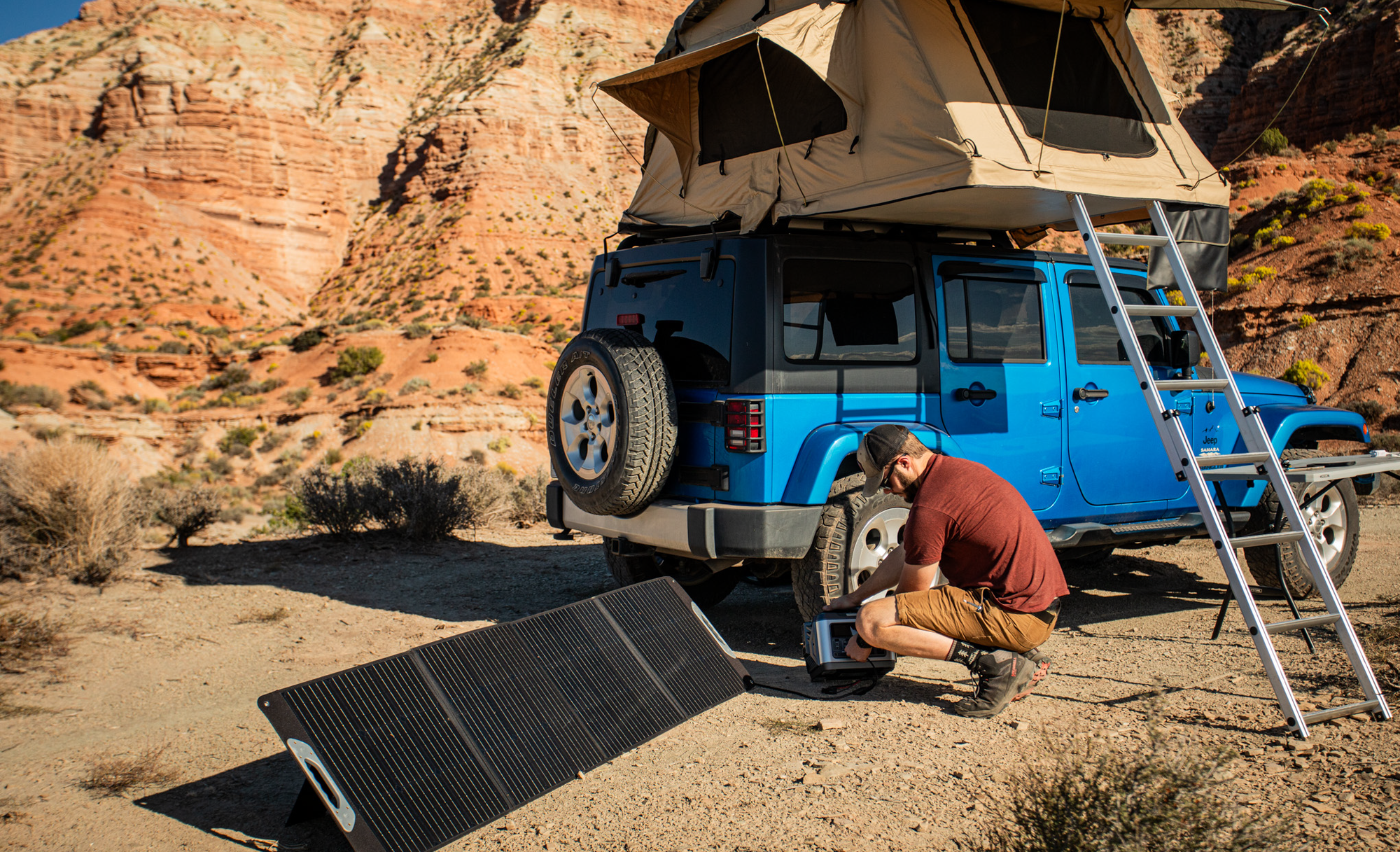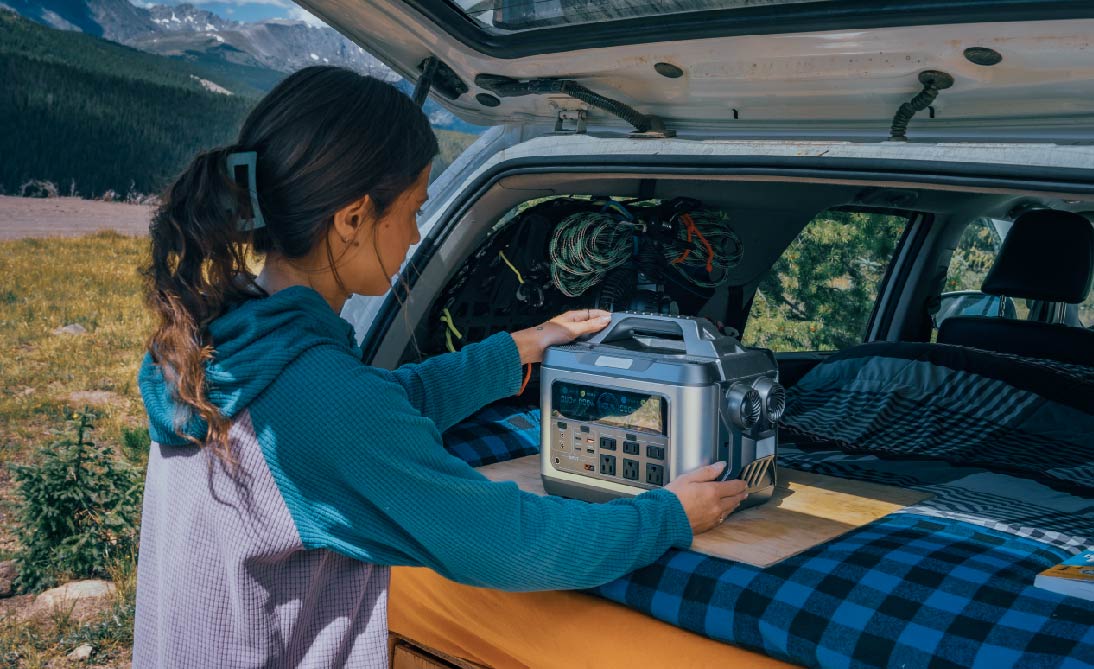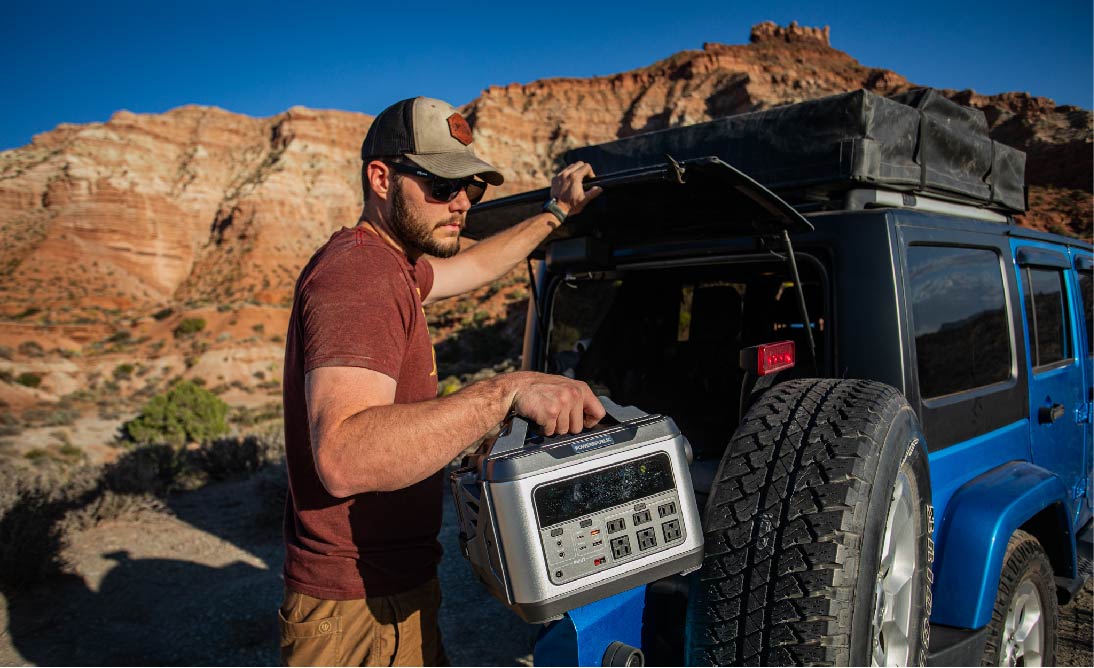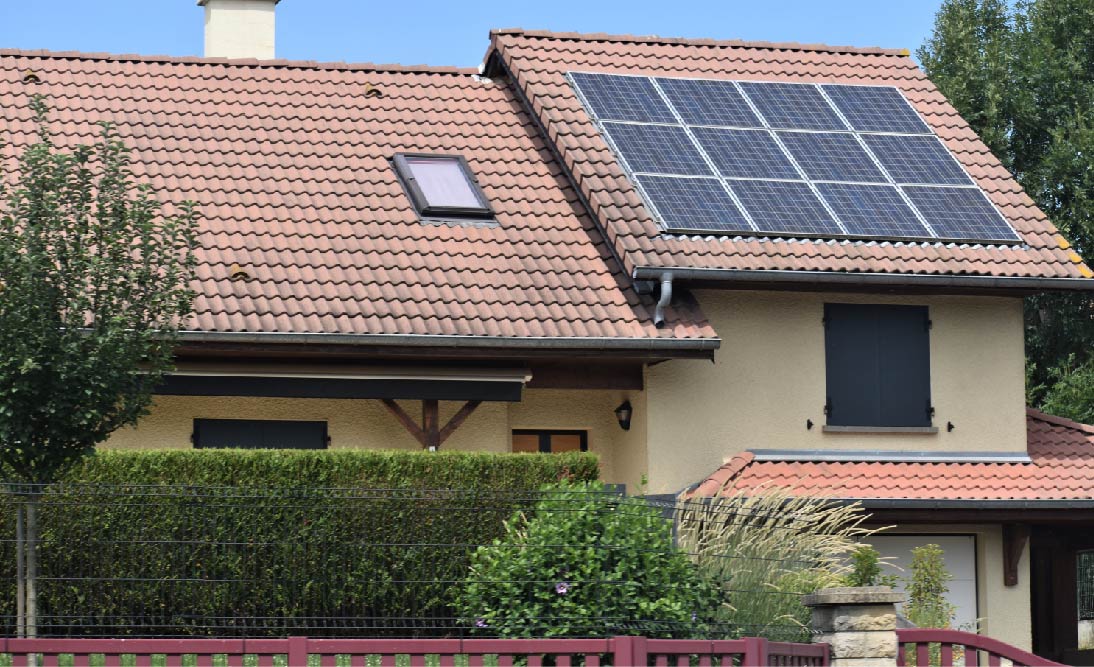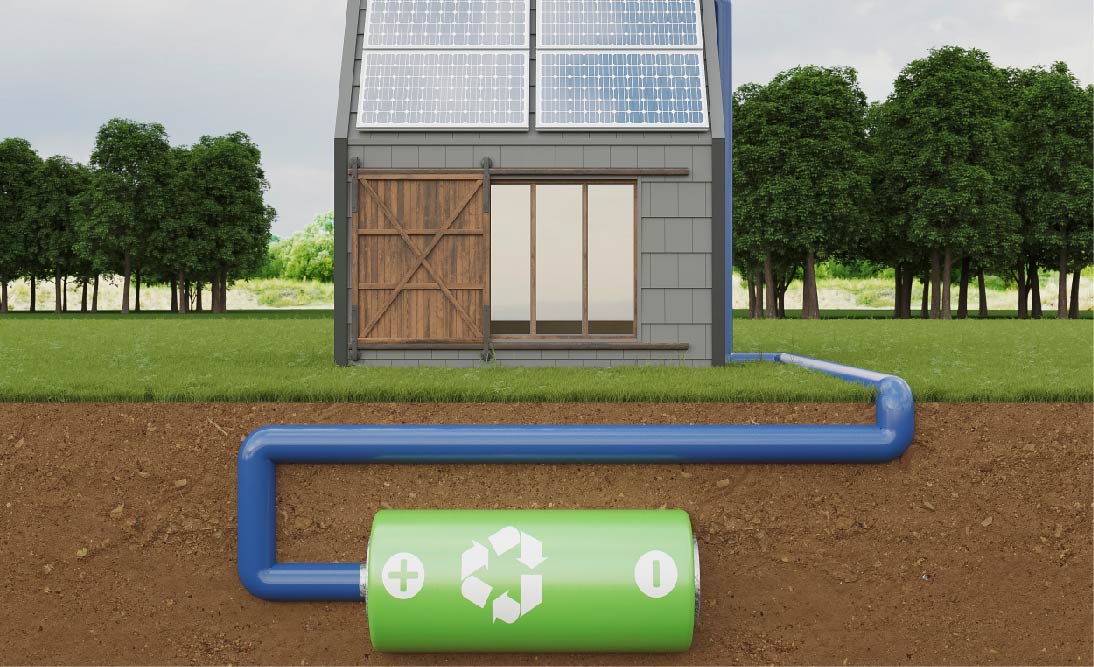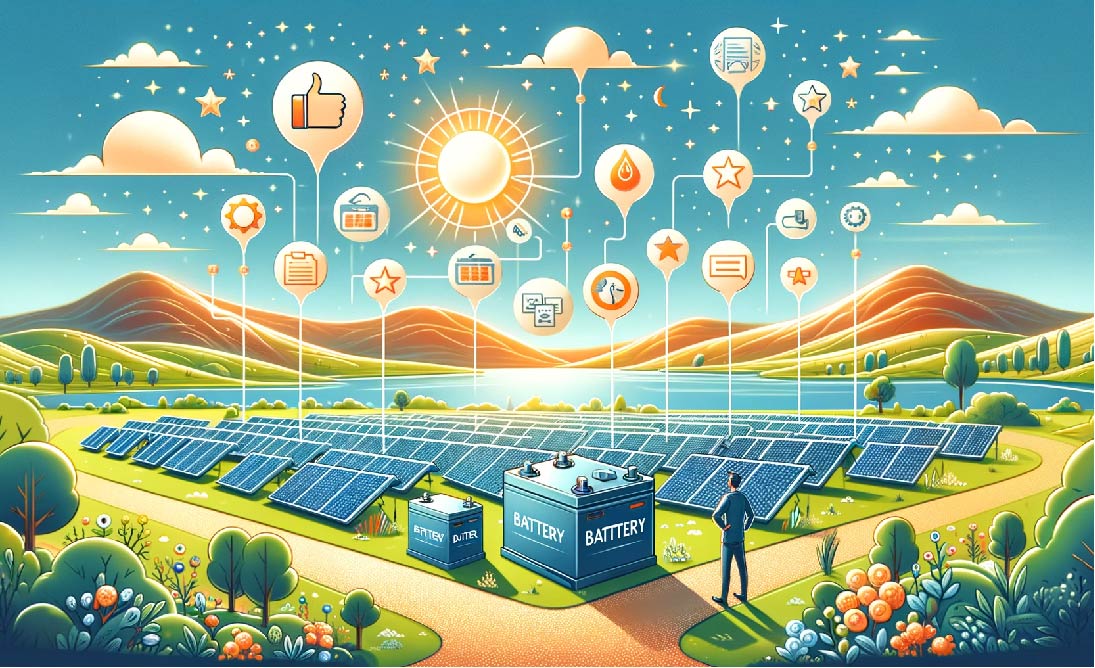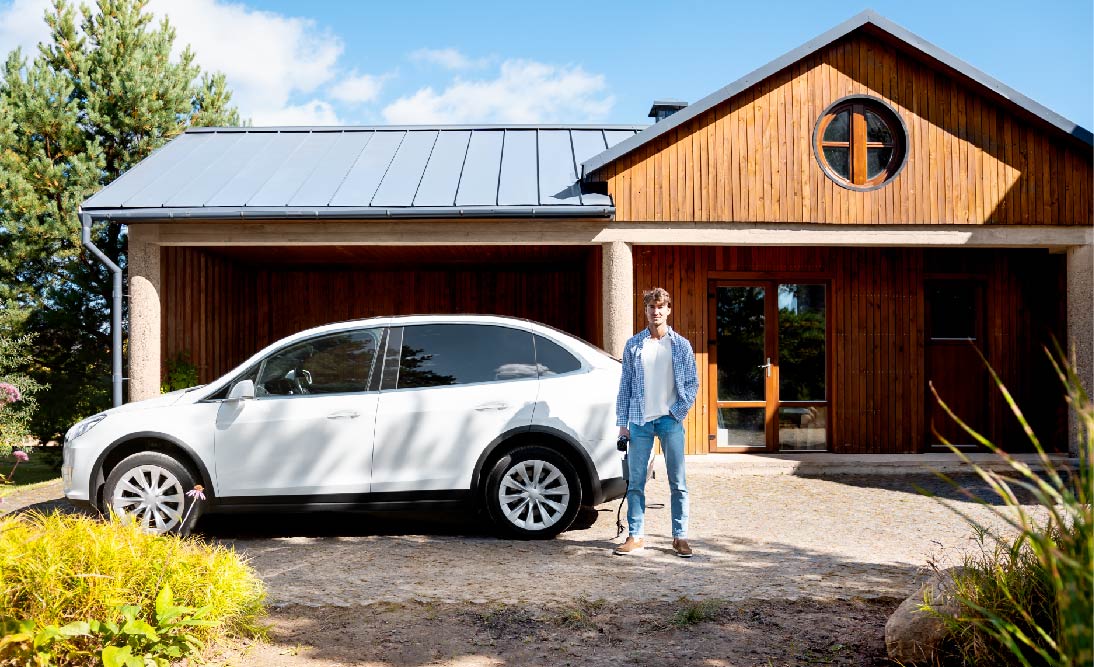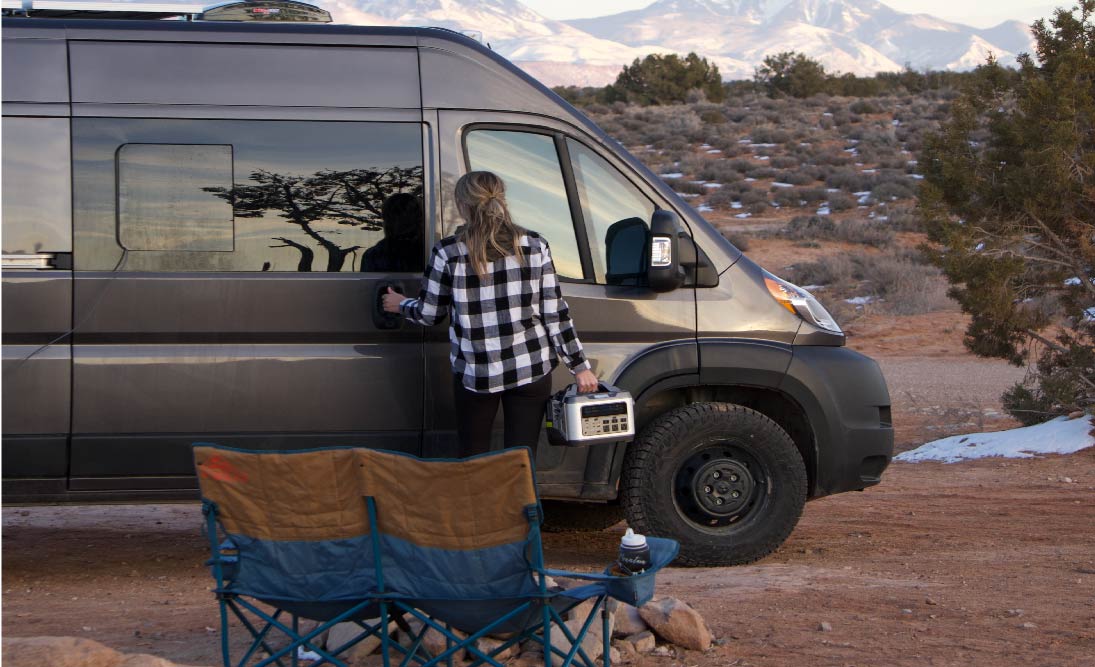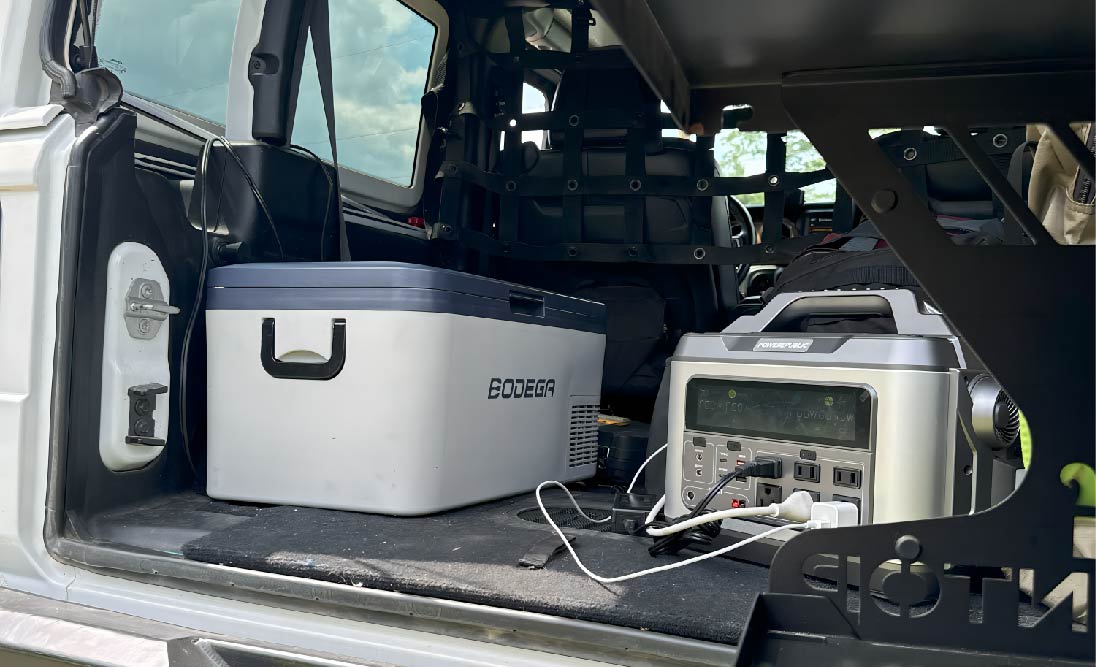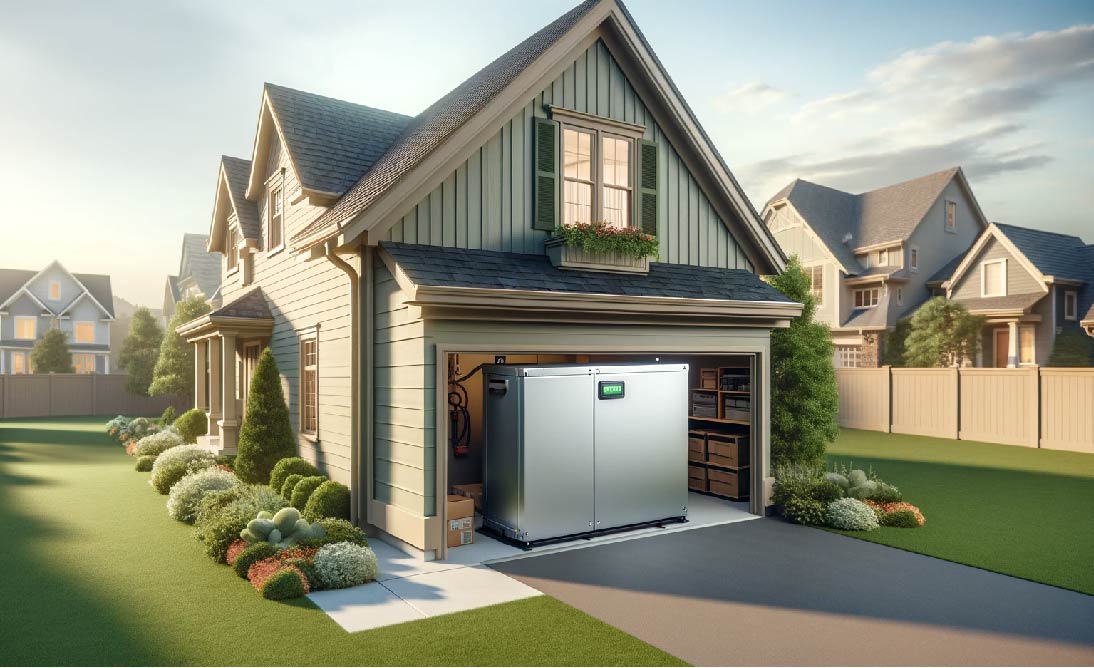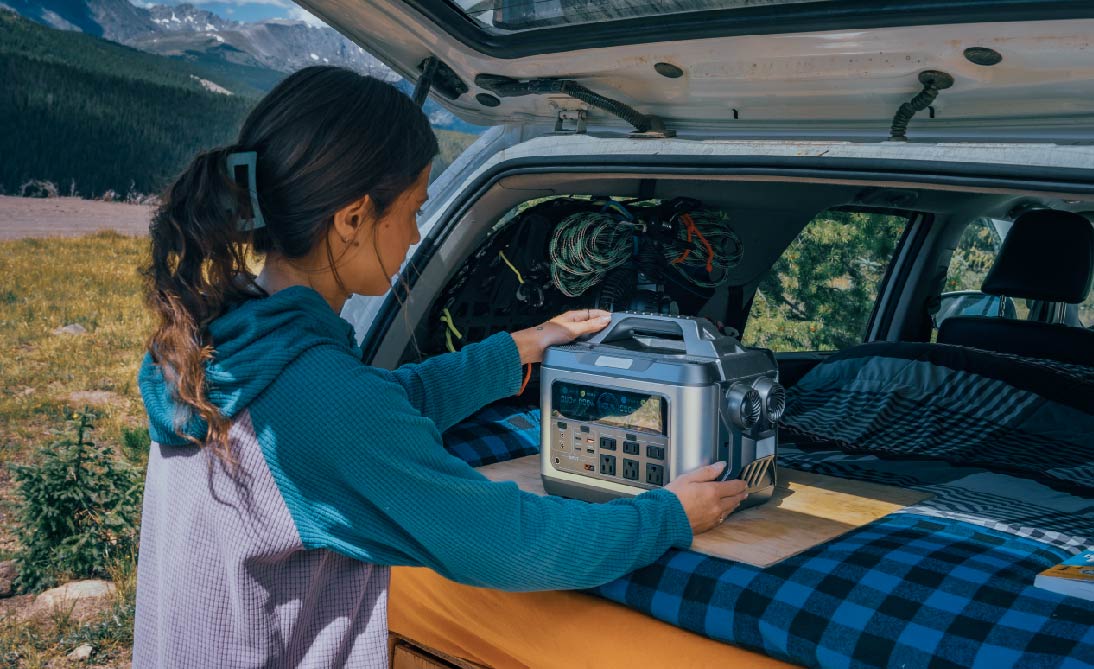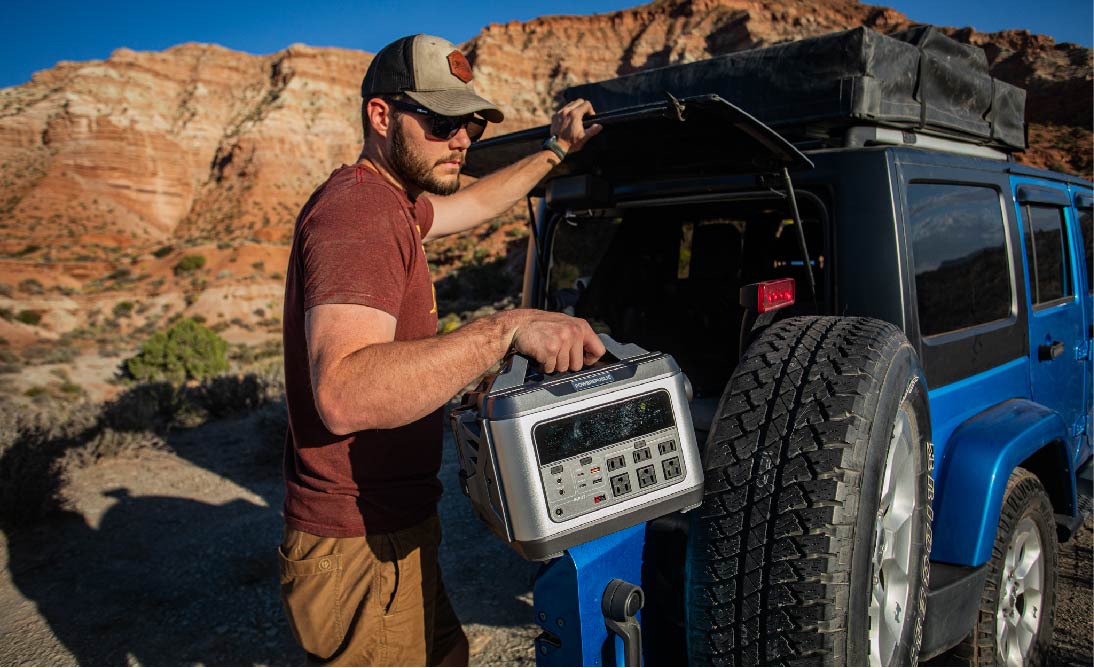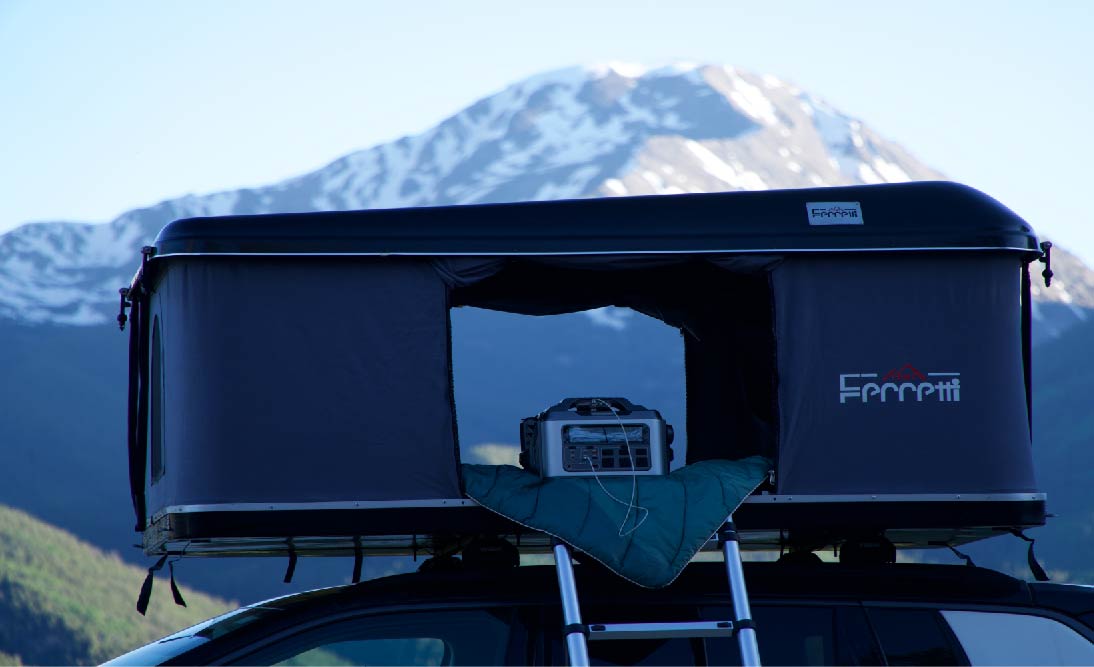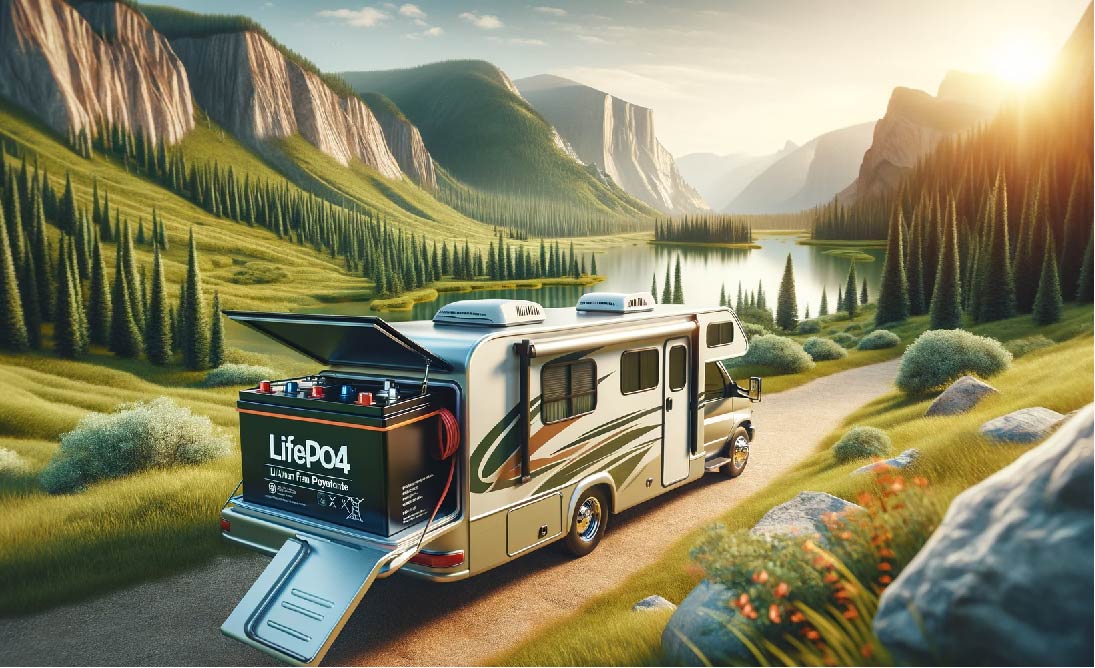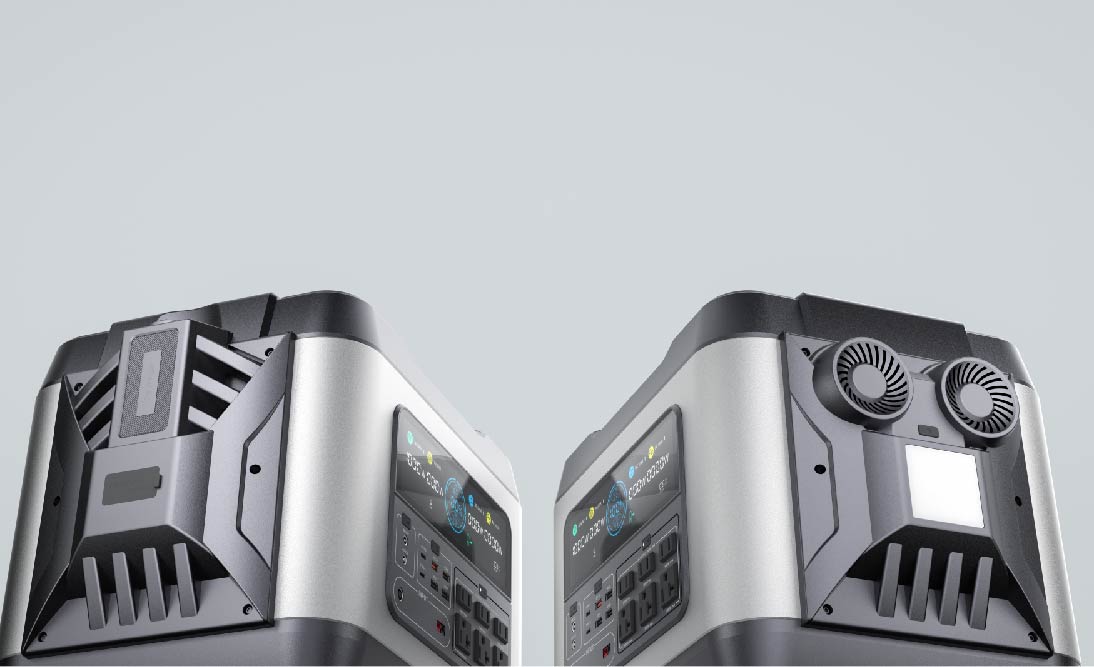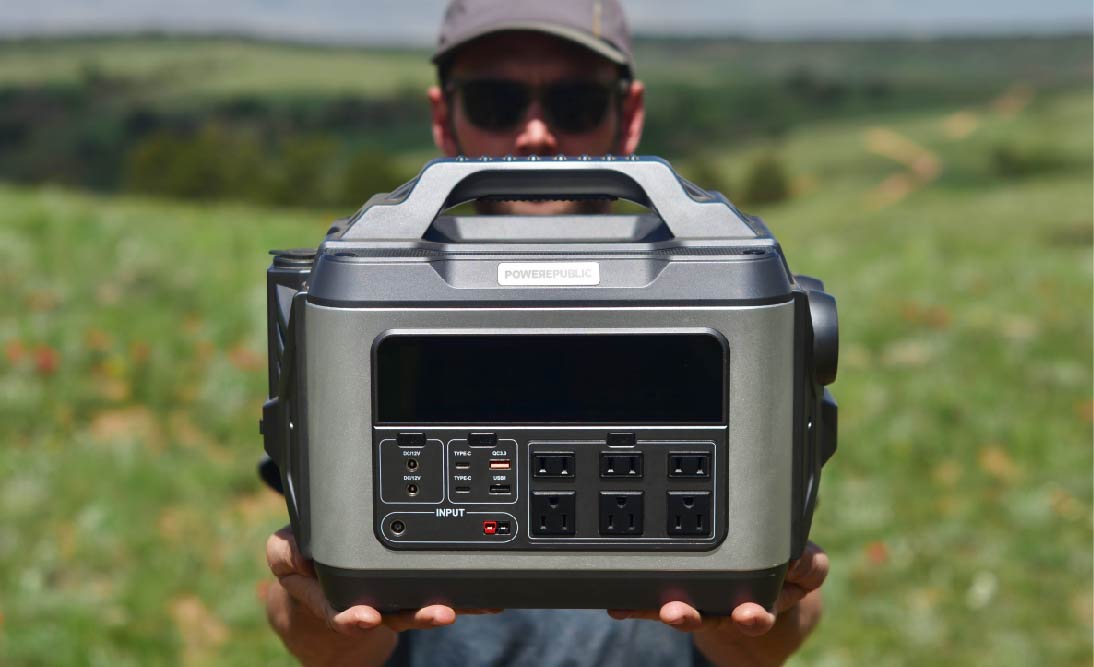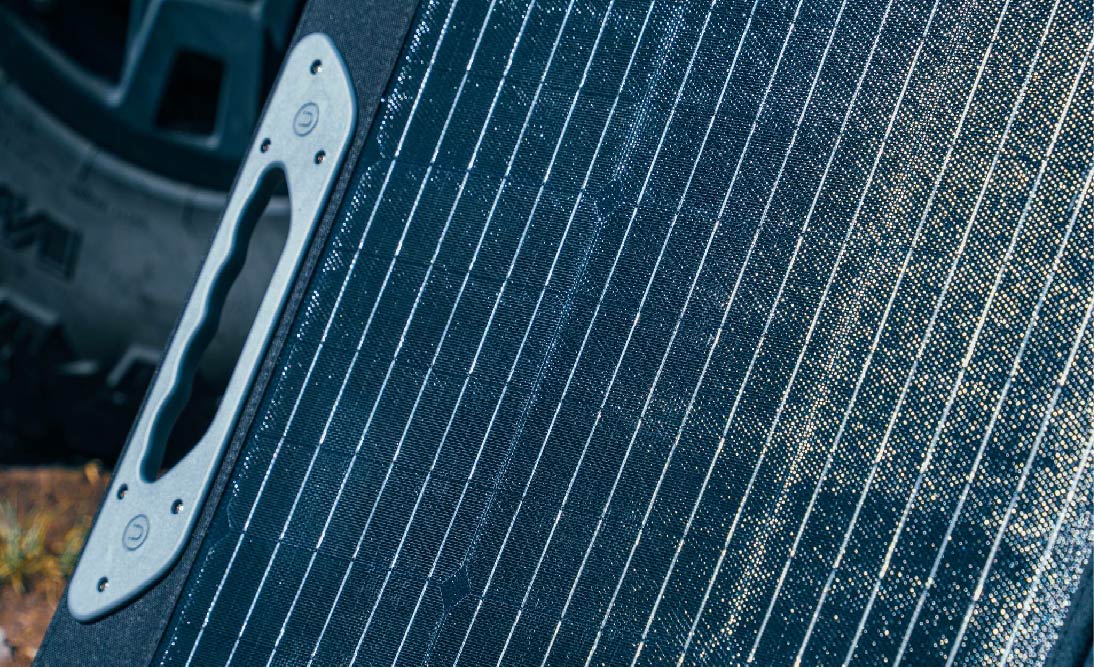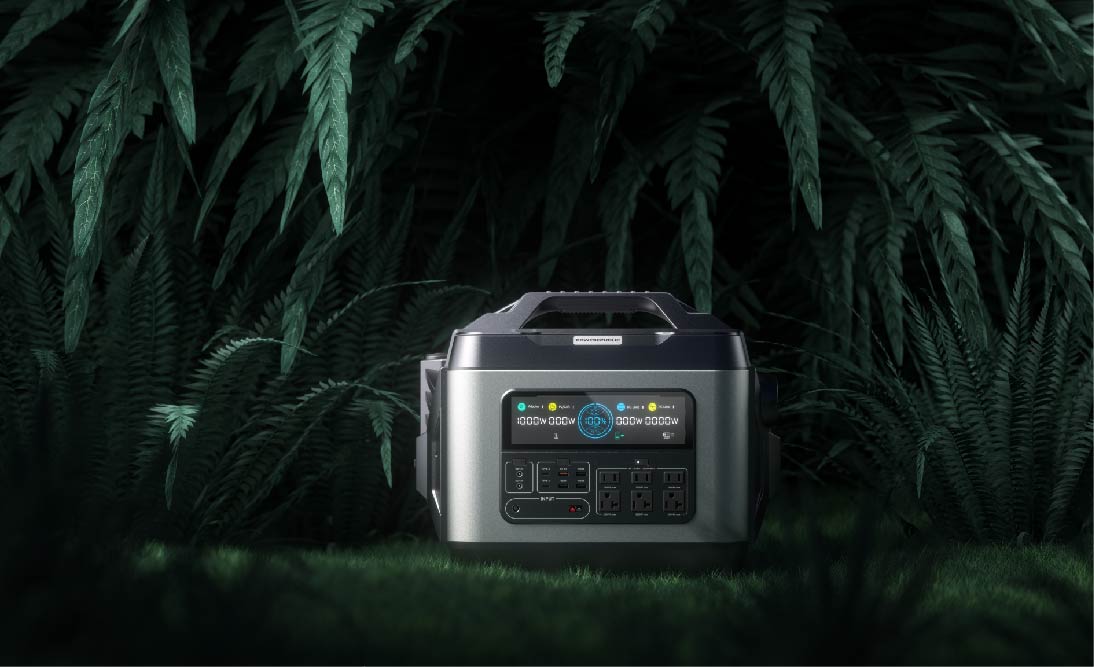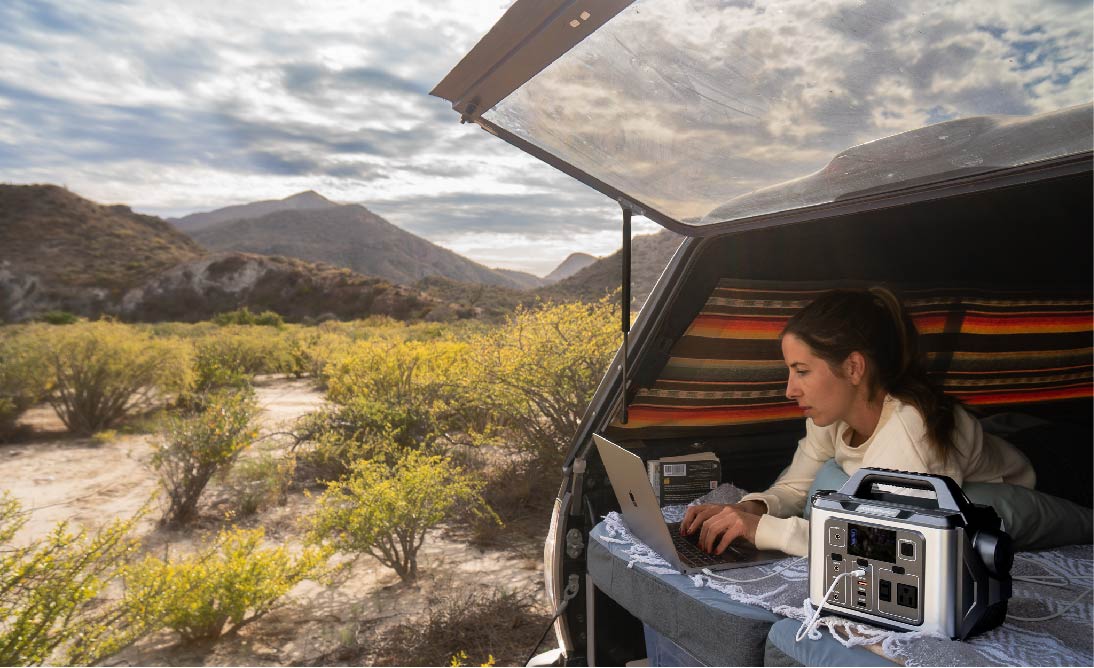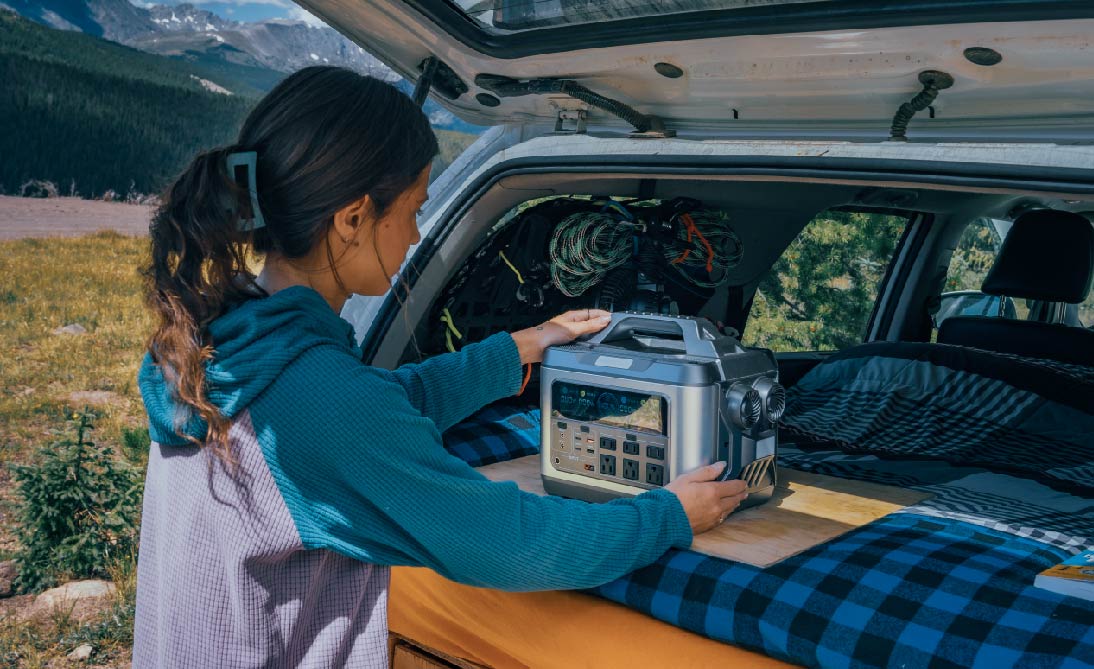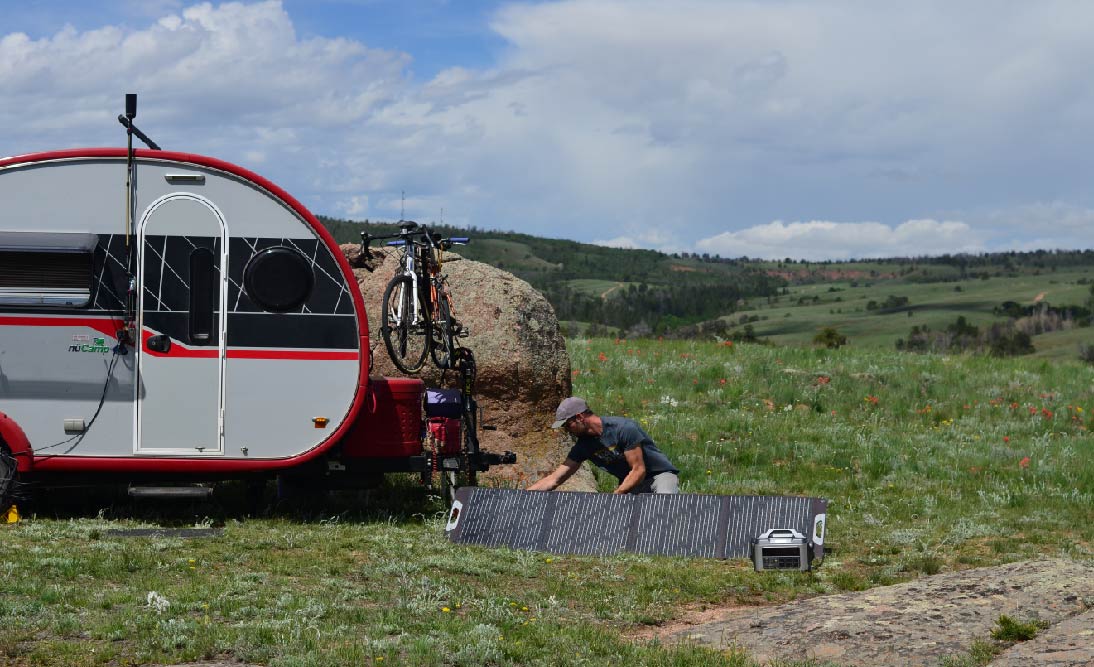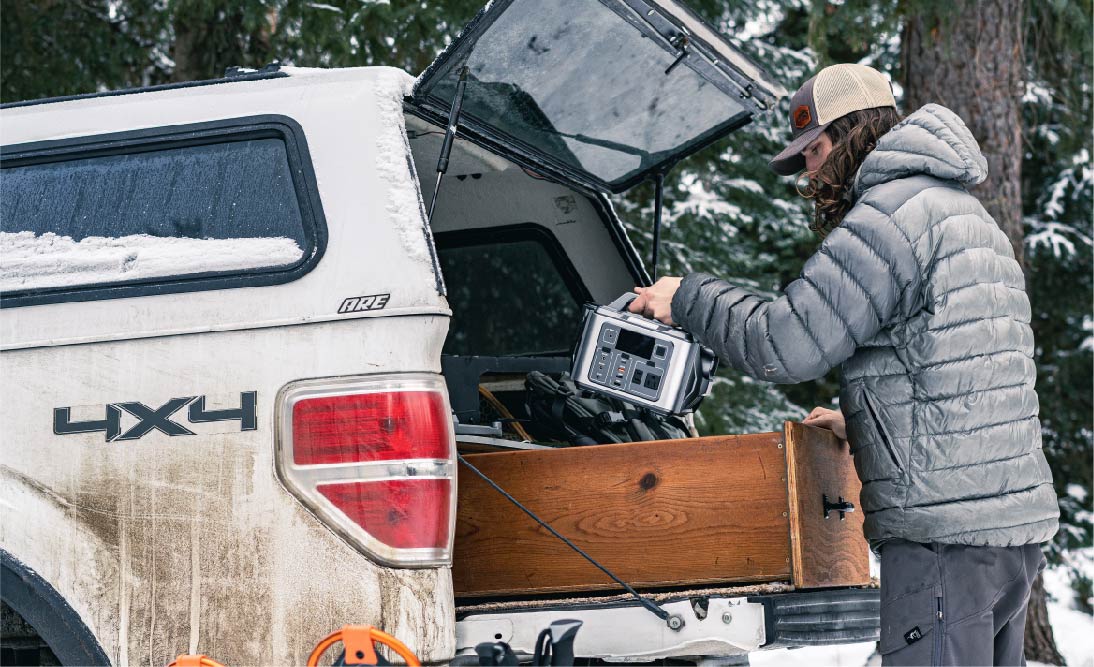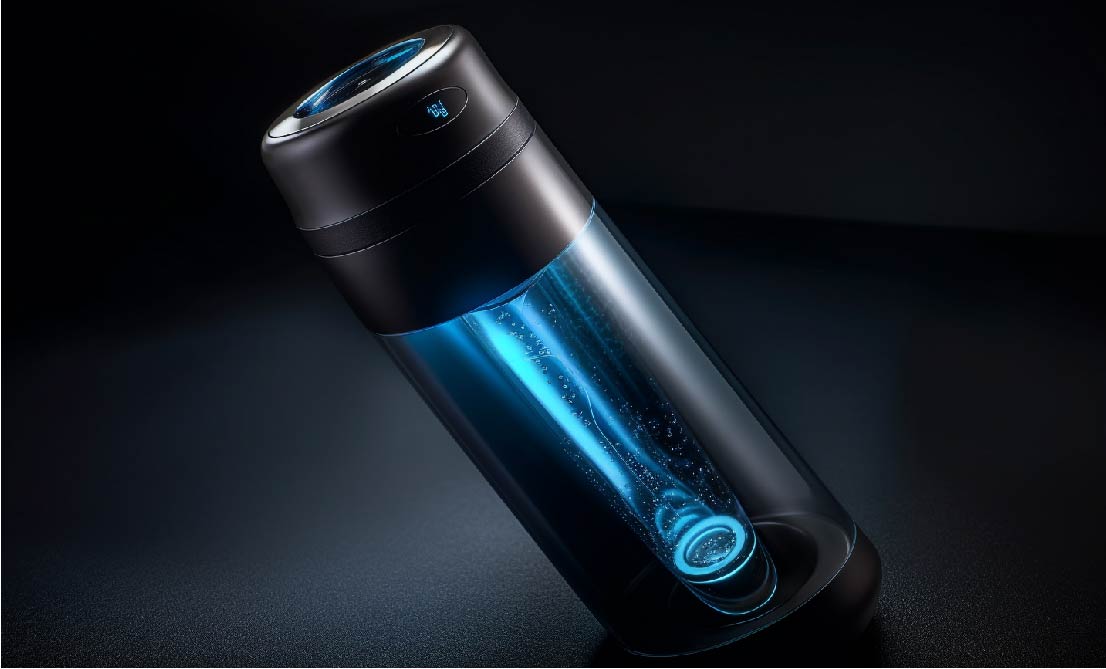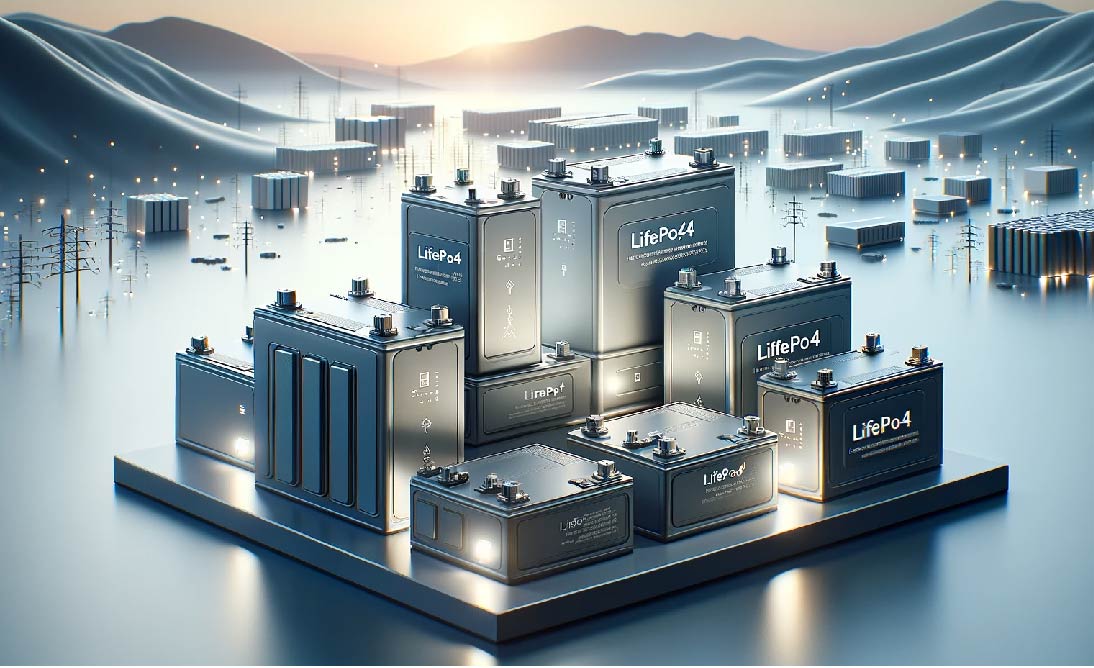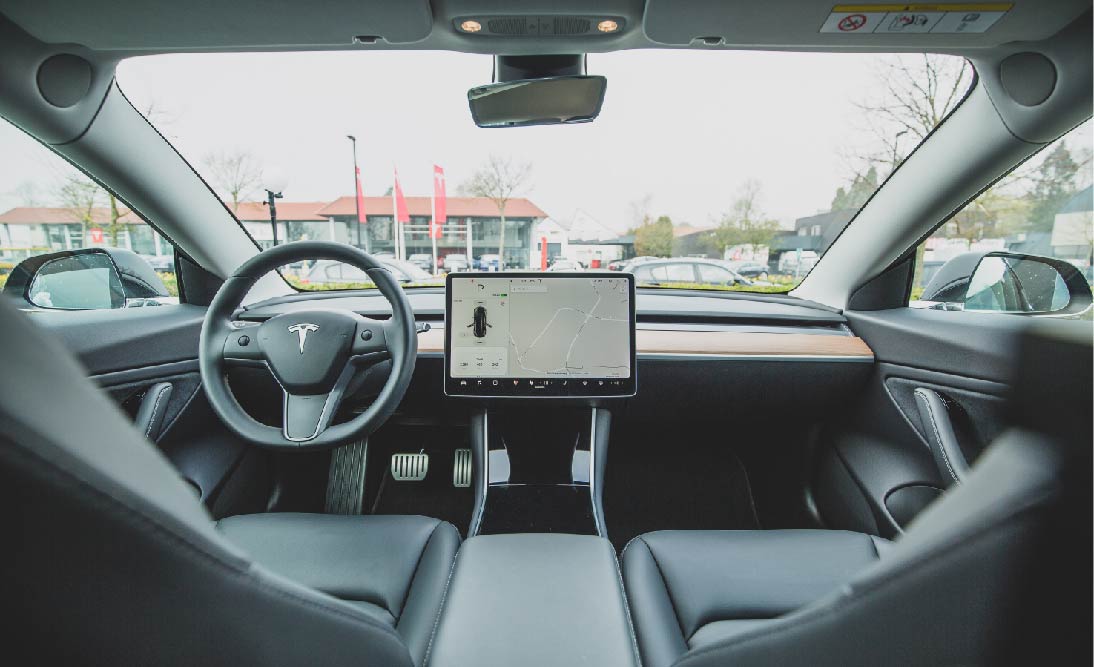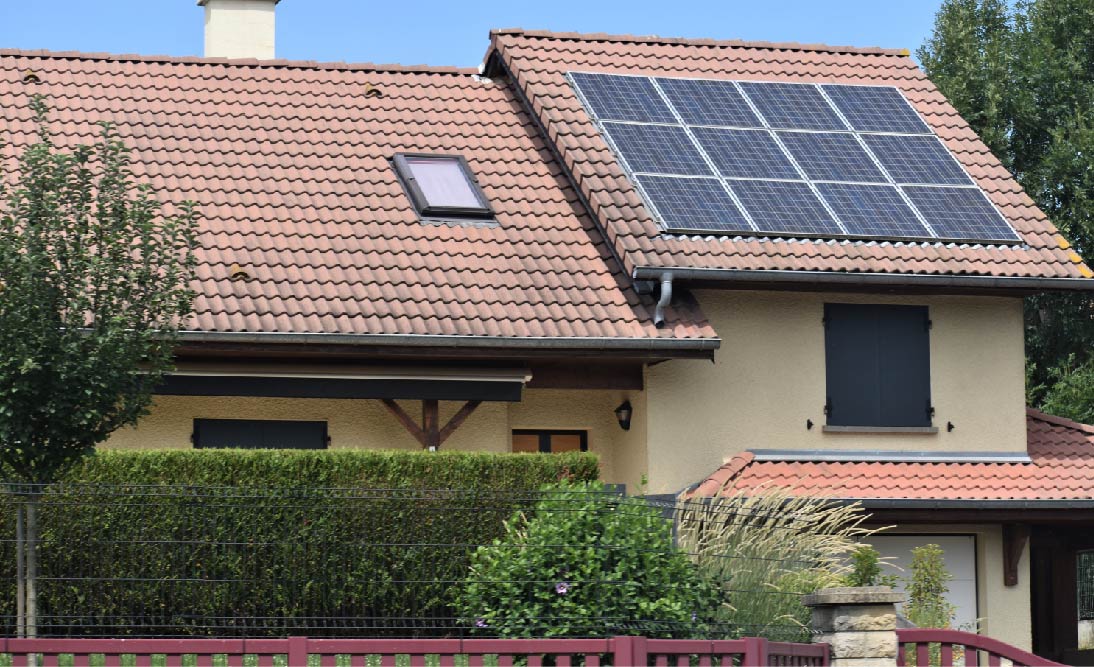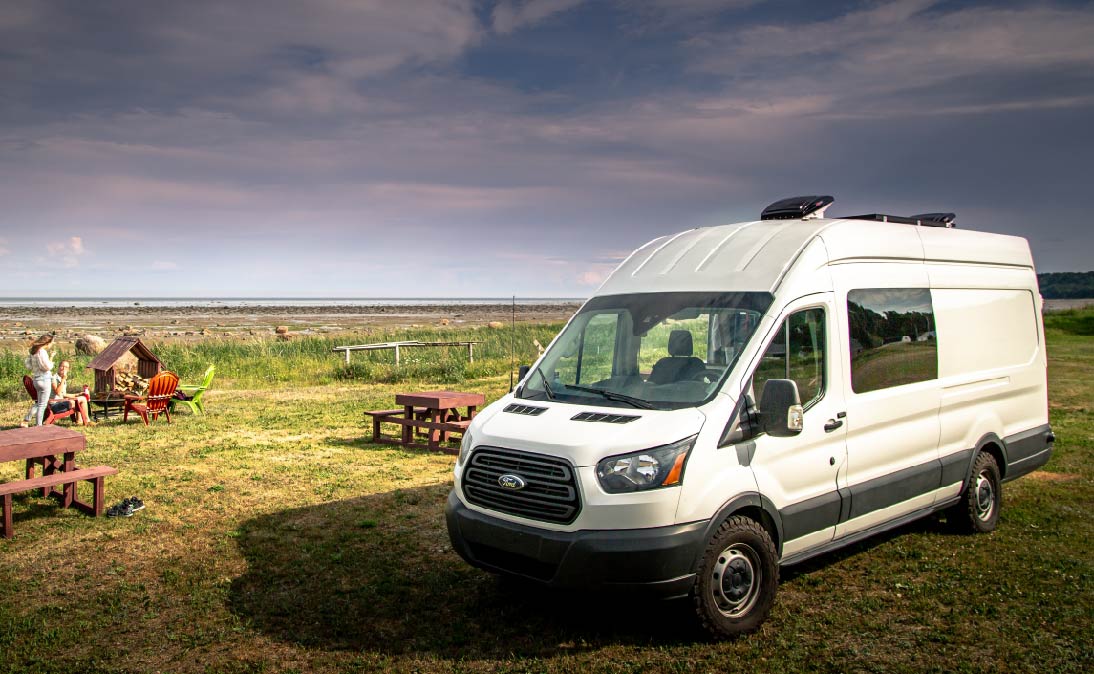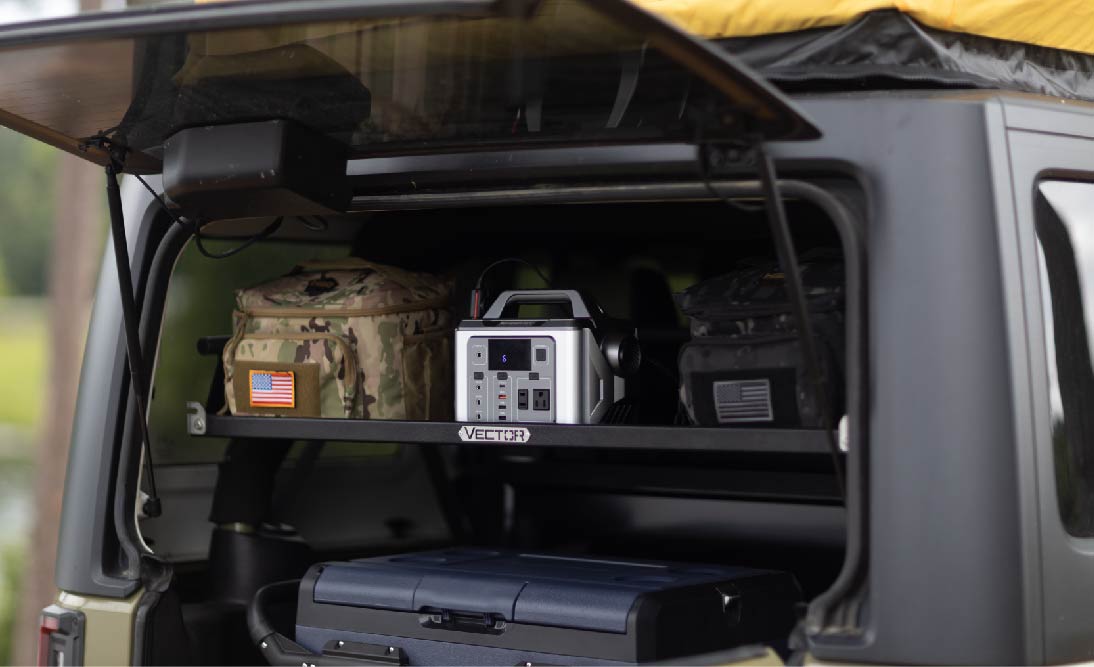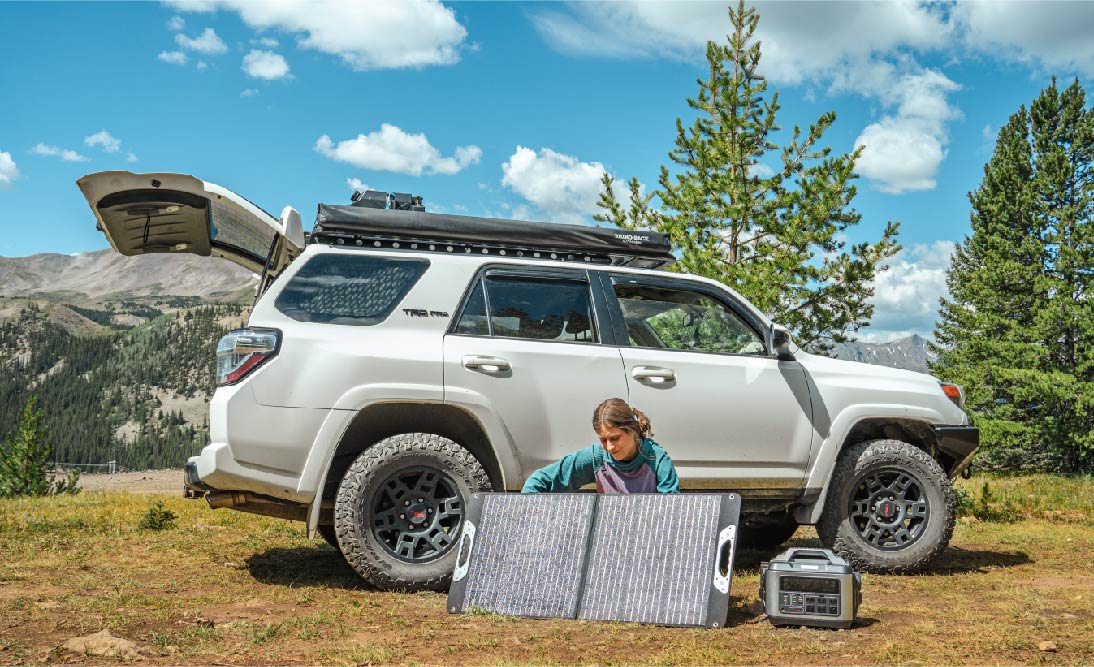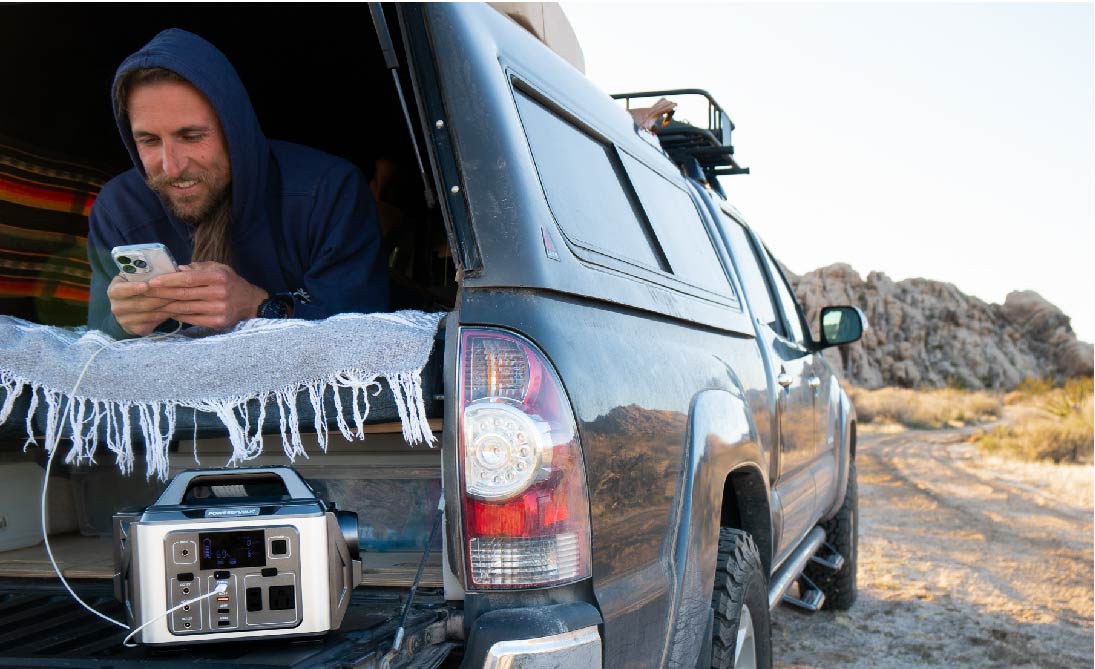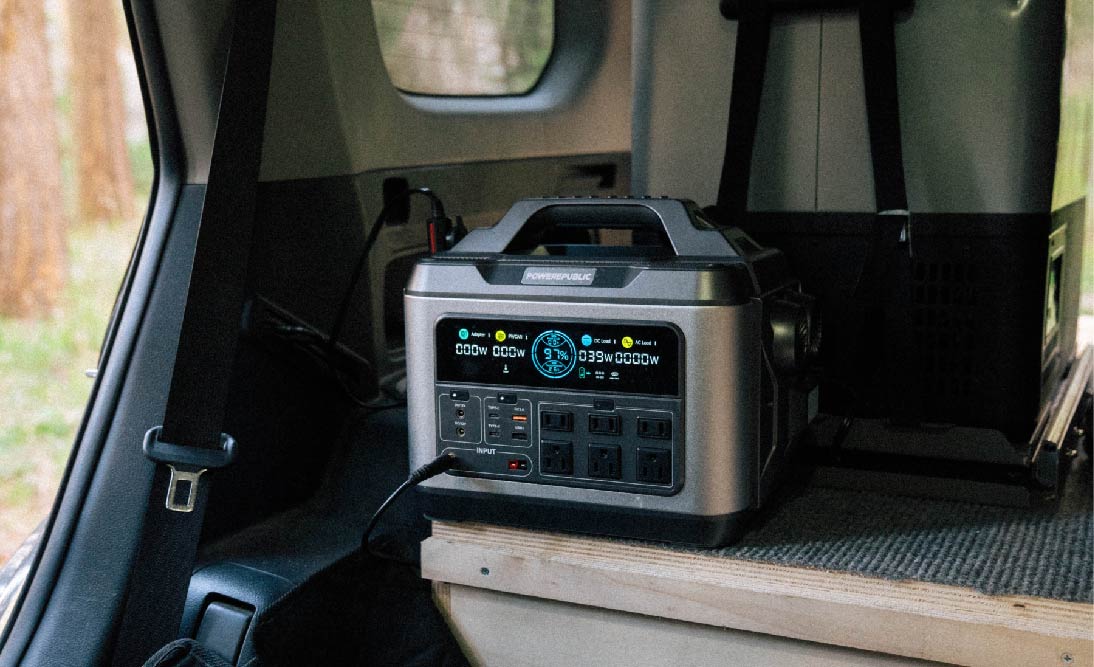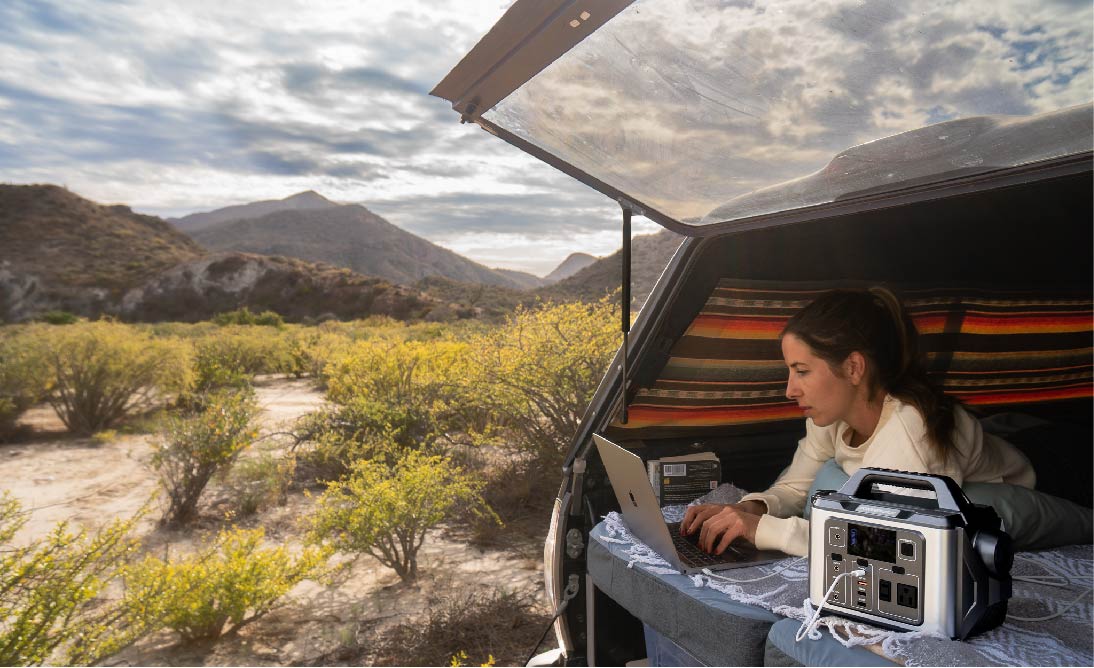Table of Contents:
If you are an active van lifer or RVer, having a reliable solar power system is extremely important to maintain your off-grid living style. As one of the most critical components in the solar power system, solar panels play a significant role in harnessing solar energy for later use.
Here, we are going to talk about solar panels, their types, how to choose the best solar panels for an RV, introduce POWEREPUBLIC portable solar panels, and address some frequently asked questions.
Solar Panel Options

When selecting the best solar panels for your RV, the 1st step is to have a general idea about what kind of options are out there for you.
Here's a breakdown of some common options for you
Monocrystalline
-
Explanation: They are produced from a single crystal, typically silicon. This manufacturing process results in a more efficient and space-efficient design.
-
Efficiency: High efficiency, typically ranging from 15% to 22%.
-
Use Scenario: Ideal for situations with limited space, such as residential rooftops or RVs where maximizing energy production per square foot is crucial.
-
Price Range: $200 to $600 per panel (for residential use).
Polycrystalline
-
Explanation: They are produced from multiple crystals, providing a cost-effective alternative to monocrystalline panels.
-
Efficiency: Moderate efficiency, usually ranging from 13% to 18%.
-
Use Scenario: Suitable for applications with more available space and where cost is a significant consideration, such as larger residential installations or commercial projects.
-
Price Range:$150 to $350 per panel (for residential use).
Thin-Film
-
Explanation: They employ a distinct manufacturing process, where thin layers of PV material are deposited on a substrate, providing them with a lightweight and flexible composition.
-
Efficiency: Generally lower efficiency ranging from 10% to 12%.
-
Use Scenario: Ideal for applications where flexibility and weight are crucial, such as portable solar chargers or integration into irregular surfaces.
-
Price Range:$100 to $300 per panel (for residential use).
Bifacial
-
Explanation: They can harness the sun's energy from both the front and rear sides, increasing overall energy production. They often have a glass back sheet to allow light to reflect onto the rear side.
-
Efficiency: Varies, but they can offer higher efficiency, especially in locations with reflective surfaces.
-
Use Scenario: Suitable for installations where light can be reflected onto the rear side, such as in snowy environments or areas with reflective surfaces.
-
Price Range: $250 to $600 per panel (for residential use).
Keep in mind that these price ranges are general estimates, and actual prices may differ based on different factors. Additionally, advancements in technology and market conditions can influence prices over time. It's advisable to check with specific suppliers or manufacturers for the most up-to-date pricing information to guide you in selecting the best solar panels for your RV.
Benefits and Drawbacks of Solar Panels

After learning about the different types of solar panels for RVs, let's explore the pros and cons of each type to provide a clearer understanding of their strengths and weaknesses.
Monocrystalline
Pros
-
High Efficiency: They offer the best efficiency, converting a higher percentage of sunlight into electricity.
-
Space Efficiency: They have a compact design, making them ideal for situations where space is limited, such as on RVs.
-
Durability: Monocrystalline panels have a longer lifespan and are very durable over time.
-
Performance in Low Light: They perform well in low-light conditions, ensuring consistent energy production even on cloudy days.
Cons
-
Higher Upfront Cost: They cost more, which can be a significant consideration for some RV owners.
-
Shading Sensitivity: These panels are sensitive to shading, and even partial shading can significantly reduce their efficiency.
Polycrystalline
Pros
-
Cost-Effective: They are more budget-friendly.
-
Moderate Efficiency: While not as efficient as monocrystalline panels, they offer a good balance of efficiency and cost.
-
Durability: Like monocrystalline panels, polycrystalline panels are durable and have a relatively long lifespan.
-
Performance in Different Lighting Conditions: They perform reasonably well in various lighting conditions.
Cons
-
Lower Efficiency: They have lower efficiency, requiring more space for the same power output.
-
Space Requirements: They are less space-efficient, making them less suitable for applications with limited space.
Thin-Film
Pros
-
Flexibility and Lightweight: They are flexible and lightweight, allowing for installation on irregular surfaces and reducing overall weight.
-
Lower Cost: These panels generally have a lower cost per panel, making them more budget-friendly.
-
High-Temperature Tolerance: They are tolerant to high temperatures, making them suitable for hot climates.
-
Diffuse Light Performance: Thin-film panels do well in diffuse light conditions, making them ideal for partially shaded environments.
Cons
-
Lower Efficiency: They have a lower efficiency, resulting in a larger installation area requirement.
-
Shorter Lifespan: They have a shorter lifespan and are less durable.
-
Installation Area Requirements: Larger installation areas are required to generate the same power output as crystalline silicon panels.
Bifacial
Pros
-
Dual-Sided Energy Capture: They capture sunlight from both the front and rear sides, increasing overall energy production.
-
Higher Efficiency in Certain Conditions: They can offer higher efficiency, especially in locations with reflective surfaces or in snowy environments.
-
Long Lifespan: Bifacial panels are known for their durability and long lifespan.
-
Versatility: Suitable for a variety of environments, including those with reflective surfaces.
Cons
-
Higher Upfront Cost: They typically come with a higher upfront cost compared to some other options.
-
Installation Conditions: To maximize efficiency, bifacial panels require specific installation conditions, such as a reflective surface.
-
Limited Effectiveness Without Reflective Surfaces: In locations without reflective surfaces, their advantages may not be fully realized.
It's important to note that the choice of solar panels for an RV depends on specific needs, available space, budget constraints, and environmental conditions. Additionally, advancements in technology may lead to changes in the pros and cons of these solar panels over time. Knowing the above info will guide you in making better decisions in selecting the best solar panels for your RV.
How To Choose The Best Solar Panels For RVs?

Choosing the best solar panels for your RV involves careful consideration of various factors to ensure they meet your specific needs. Let's break down the decision-making process with estimations and examples for each factor:
Calculate Your Power Needs
-
Calculate your energy consumption per day in Wh. For example, if your appliances and devices consume a total of 1,000 Wh per day and you want to generate power for 5 hours of sunlight, you'd need a solar panel system capable of producing 200 watts per hour (1,000 Wh / 5 hours).
Determine Panel Efficiency
-
Consider panel efficiency when sizing your system. If you need 200 watts per hour and you choose a panel with 20% efficiency, you'd need a 1,000-watt solar panel system (200 W / 0.20).
Consider Available Space
-
Measure the roof space on your RV. If you have 50 square feet of available space and you choose a 20% efficient monocrystalline panel (e.g., SunPower X-Series), you can install a panel with a capacity of 250 watts (50 sq ft * 20% efficiency).
Budget Considerations
-
Compare costs per watt for different panel types. If a monocrystalline panel costs $1 per watt and you need a 250-watt system, your estimated cost would be $250.
-
Factor in additional costs for components like charge controllers, inverters, and wiring. For example, if these components cost an additional $100, your total estimated cost would be $350.
Evaluate Panel Types
-
Consider the pros and cons of each panel type based on your specific needs. If space is limited, the higher efficiency of monocrystalline panels might be worth the higher upfront cost.
Consider Environmental Factors
-
If you frequently travel to hot climates, choose panels with a lower temperature coefficient. For instance, if Panel A has a temperature coefficient of -0.3% per degree Celsius and Panel B has -0.5%, Panel A would perform better in high temperatures.
Check Product Warranty and Lifespan
-
Consider the warranty and lifespan of the panels. If Panel X offers a 25-year warranty and Panel Y offers a 20-year warranty, and both meet your other criteria, Panel X might be a more reliable choice for long-term use.
Seek Recommendations and Reviews
-
Research customer reviews for specific brands and models. If multiple RV owners recommend a particular brand for reliability and performance, it may be a good choice for your RV solar system.
-
POWEREPUBLIC has a 4.5 rating on Trustpilot.
Consider DIY vs. Professional Installation
-
Evaluate the complexity of the installation process. If you opt for a DIY installation, estimate the time and tools required. If professional installation costs $500 but saves you time and ensures proper setup, it might be a worthwhile investment.
Stay Updated on Technological Advancements
-
Regularly check for advancements in solar technology. If a new panel type or technology emerges that significantly improves efficiency or cost-effectiveness, it may be worth considering for future upgrades.
By breaking down the decision-making process with these estimations and examples, you can make a well-informed choice to choose the best solar panels for your RV.
Introduce POWEREPUBLIC Portable Solar Panels as an Option
POWEREPUBLIC PV100 - Portable and Handy

Best for RVs!
If you are looking for a portable solar panel that is lightweight, functional, and won’t take up too much space, consider POWEREPUBLIC's 100W portable solar panel.
When traveling in an RV, it is important to keep everything as compact and light as possible. With 7.7 pounds and folding to dimensions of 23.2*20.5*1.2 inches, our PV100 is handy enough to take with you and easy to store on the back of your RV. The monocrystalline cells on the surface, with an efficiency rate of 23%, and the adjustable stands together maximize the absorption of sunlight. Our 100W portable solar panel, under prime sun exposure, can produce 50 to 75W of actual solar input for the battery. It can be paired with all POWEREPUBLIC portable power stations. It’s your choice to pair our PV100 with the portable power station according to your power needs and budget.
Furthermore, the USB ports built on the back allow you to charge small electronic devices. So, if you are looking for the best solar panels for your RV, POWEREPUBLIC's 100W portable solar panel will be an excellent choice.
POWEREPUBLIC PV200 - Higher Solar Input and More Practical

Best for van-lifers and RVers who want higher solar input and faster recharge time.
Compared to our PV100, the POWEREPUBLIC 200W portable solar panel weighs twice as much, around 17.6 lbs (8 kg). The PV200 also uses monocrystalline cells with a 23% efficiency rate, and the adjustable stands maximize sunlight absorption. The actual solar input of the POWEREPUBLIC 200W portable solar panel, under prime sun exposure, is about 150-175W. So, if you use the battery more often and want a faster recharge time, our PV200 would be a great choice for you. It can be paired with 3 of our portable power stations - T1200, T2200, and T3000.
Like our PV100, the POWEREPUBLIC 200W portable solar panel also has USB ports built on the back, allowing you to charge small electronic devices. If you are looking for the best solar panels for your RV with higher solar input, consider the POWEREPUBLIC 200W portable solar panel.
How Many Solar Panels Do I Need for My RV?

Step 1: Determine Your Daily Energy Consumption
Identify devices and power requirements
-
LED Lights: 20W, 4 hours/day
-
Refrigerator: 80W, 24 hours/day (assuming it runs continuously)
-
Laptop: 50W, 3 hours/day
-
Water Pump: 30W, 1 hour/day
Calculate your energy consumption per day
-
LED Lights: 20W*4h=80Wh
-
Refrigerator: 80W*24h=1920Wh
-
Laptop: 50W*3h=150Wh
-
Water Pump: 30W*1h=3Wh
-
Daily energy consumption = 80 Wh + 1920 Wh + 150 Wh + 30 Wh = 2180 Wh
Step 2: Consider Battery Efficiency and Days of Autonomy
Assume battery efficiency
-
Assume a battery efficiency of 90%
Determine days of autonomy
-
Assume you want 2 days of autonomy
-
Total energy needed = (2180Wh*0.2)/0.9 = 4844.44 Wh
Step 3: Take Solar Panel Efficiency and Sunlight Hours Into Account
Assume solar panel efficiency
-
Assume a solar panel efficiency of 18%
Determine available sunlight hours
-
Assume an average of 5 sunlight hours per day
-
Total daily solar generation = (4844.44 Wh/0.18)/ 5h = 5382.71 Wh
Step 4: Calculate the Number of Solar Panels
Assume solar panel capacity
-
Number of solar panels = 5382.71Wh/200W=26.91 panels
-
Rounded up. So you would need 27 solar panels.
In this detailed example, you would need approximately 27 solar panels, each with a capacity of 200W, to meet your estimated daily energy consumption and provide 2 days of autonomy. Adjustments can be made based on specific circumstances and preferences.
How To Calculate The Power of Solar Panels I Need for My RV?

Step 1: Determine Your Daily Energy Consumption
Identify devices and power requirements
-
LED Lights: 20W, 4 hours/day
-
Refrigerator: 80W, 24 hours/day (assuming it runs continuously)
-
Laptop: 50W, 3 hours/day
-
Water Pump: 30W, 1 hour/day
Calculate energy consumption per day
-
LED Lights: 20W*4h=80Wh
-
Refrigerator: 80W*24h=1920Wh
-
Laptop: 50W*3h=150Wh
-
Water Pump: 30W*1h=3Wh
-
Total daily energy consumption = 80 Wh + 1920 Wh + 150 Wh + 30 Wh = 2180 Wh
Step 2: Consider Battery Efficiency and Days of Autonomy
Assume battery efficiency
-
Assume a battery efficiency of 90%
Determine days of autonomy
-
Assume you want 2 days of autonomy
-
Total energy needed = (2180Wh*0.2)/0.9 = 4844.44 Wh
Step 3: Take Solar Panel Efficiency and Sunlight Hours Into Account
Assume solar panel efficiency
-
Assume a solar panel efficiency of 18%
Determine available sunlight hours
-
Assume an average of 5 sunlight hours per day
-
Total daily solar generation = (4844.44 Wh/0.18)/ 5h = 5382.71 Wh
Step 4: Calculate the Number of Solar Panels
Assume solar panel capacity
-
Assume you're using 200W solar panels
-
Number of solar panels = 5382.71Wh/200W=26.91 panels
-
Rounded up. So you would need 27 solar panels. Thus, the total wattage of the solar panels you need for your RV is 27*200W=5,400W.
In this example, you would need approximately 5,400W solar panels to meet your estimated daily energy consumption, provide 2 days of autonomy, and account for solar panel efficiency and available sunlight hours. Adjustments can be made based on specific circumstances, location, and preferences.
What’s the lifespan of a solar panel for my RV?

The lifespan of a solar panel is influenced by various factors, and while specific lifespans can vary, here's a general overview based on the types:
Monocrystalline Solar Panels
-
Lifespan: Typically comes with warranties ranging from 25 to 30 years.
-
Notes: Known for their durability and longevity, monocrystalline panels often outperform their warranty period, and many continue to operate efficiently for 30 years or more.
Polycrystalline Solar Panels
-
Lifespan: Similar to monocrystalline panels, often covered by warranties of 25 to 30 years.
-
Notes: While they may have a slightly lower efficiency, they still offer a long lifespan. The actual performance can last well beyond the warranty period with proper care.
Thin-Film Solar Panels
-
Lifespan: Generally, warranties range from 10 to 25 years.
-
Notes: Thin-film panels may have a slightly shorter lifespan compared to crystalline panels. Their efficiency might degrade faster, but with proper maintenance, they can still operate for two decades or more.
Bifacial Solar Panels
-
Lifespan: Typically covered by warranties similar to monocrystalline and polycrystalline panels, ranging from 25 to 30 years.
-
Notes: The lifespan is comparable to traditional panels. Bifacial panels can offer additional advantages in certain scenarios, like higher energy production due to their ability to capture sunlight from both sides.
Other factors that affect the lifespan of solar panels:
-
Proper installation, maintenance, and adherence to manufacturer guidelines play a crucial role in determining the actual lifespan of any solar panel.
-
Degradation rates, often around 0.5% to 1% per year, are considered industry-standard. This means that after 25 years, the panels should still be producing a significant portion of their original capacity.
Remember that these are general estimates, and the actual performance of solar panels can be influenced by environmental conditions, maintenance practices, and other factors. Always consult with the specific manufacturer for details related to their products.
Final Thoughts
In conclusion, choosing the best solar panels for your RV involves thoughtful consideration of types, pros and cons, and key factors in the decision-making process. Monocrystalline panels are known for their high efficiency and long-lasting durability, making them suitable for limited spaces. Polycrystalline panels are more cost-effective. Thin-film panels offer flexibility but with lower efficiency and a shorter lifespan. Bifacial panels excel in capturing sunlight from both sides, ideal for specific environments. Estimating your power needs, considering available space, and factoring in budget considerations are crucial steps in deciding to select the best solar panels for RVs.
POWEREPUBLIC's portable solar panels, exemplified by the PV100 and PV200, cater to the diverse needs of RVers, providing efficient and practical solutions. The comprehensive FAQs guide on estimating the number and total wattage of solar panels ensures a tailored approach. Lastly, understanding the lifespan of different panel types empowers RV enthusiasts to make sustainable and reliable choices for their off-grid journeys. Always stay updated on technological advancements for future considerations. Ultimately, a well-informed decision ensures a reliable and efficient solar power system for an enriching RV experience.
